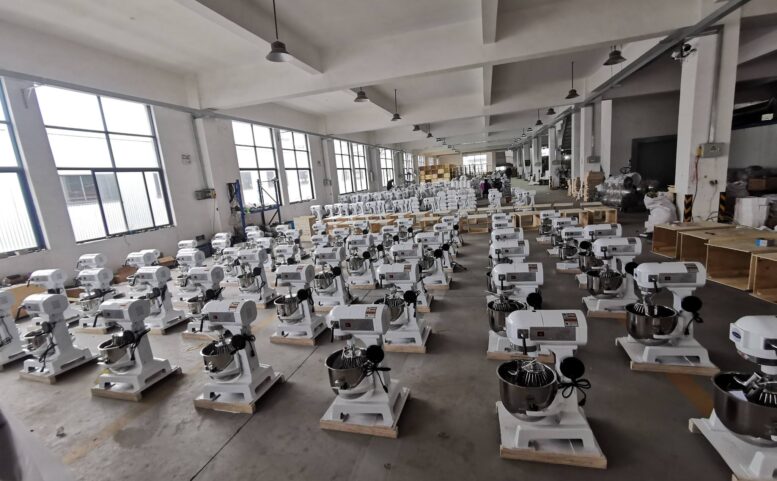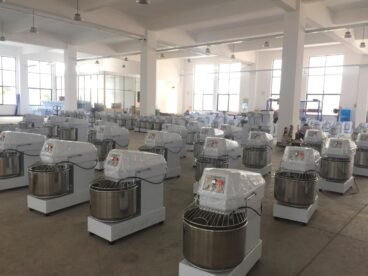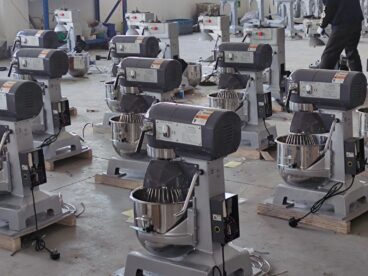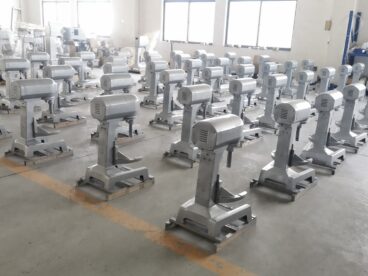When it comes to stand mixers, two of the most common designs you’ll encounter are the bowl-lift and tilt-head models. Both have their unique features, benefits, and potential drawbacks, making the choice between them dependent on your specific needs and preferences in the kitchen. In this comprehensive guide, we’ll explore the differences between bowl-lift and tilt-head mixers, helping you make an informed decision for your culinary adventures.
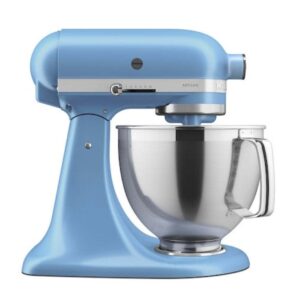
1. Design and Functionality
Bowl-Lift Mixers:
Bowl-lift mixers have a stationary head with a bowl that is raised and lowered by a lever. This design keeps the mixer head in place during operation, providing stability and allowing for the use of larger, heavier bowls. The bowl is attached to arms on either side of the mixer, which lift it into place.
Tilt-Head Mixers:
Tilt-head mixers have a hinged head that can be tilted back to allow access to the bowl and attachments. This design makes it easy to add ingredients, change attachments, and remove the bowl. The bowl is usually attached to the base of the mixer and is secured in place with a locking mechanism.
TILT-HEAD & BOWL-LIFT STAND MIXER FEATURES
| FEATURES | TILT-HEAD MIXER | BOWL-LIFT MIXER |
|---|---|---|
| BOWL ACTION | Twists onto base and remains stationary | Secures to arms that raise and lower with a lever |
| STAND MIXER CAPACITY1 | 3.5–5 quarts | 5–7 quarts |
| COLORS | 40+ | 10+ |
| BEST FOR | Single households, families and everyday use | Large batches and heavy mixtures |
| ATTACHMENTS | 10+2 | 10+ |
| SPEEDS | 10 | 10 |
| WEIGHT | 18–26 pounds | 29–32 pounds |
2. Ease of Use
Bowl-Lift Mixers:
- Accessibility: Bowl-lift mixers can be a bit more challenging to access compared to tilt-head mixers. The bowl is lifted into place and can sometimes be harder to maneuver, especially when adding ingredients or scraping down the sides.
- Stability: The stationary head and lifted bowl provide excellent stability, making bowl-lift mixers ideal for heavy-duty mixing and large batches.
- Capacity: These mixers often come with larger bowls, making them suitable for mixing large quantities of dough or batter.
Tilt-Head Mixers:
- Accessibility: Tilt-head mixers offer easy access to the bowl and attachments. Tilting the head back provides ample space to add ingredients, scrape the bowl, and change attachments without much hassle.
- Space Efficiency: Tilt-head mixers are generally more compact, making them a good choice for kitchens with limited counter space.
- Capacity: These mixers typically come with smaller bowls compared to bowl-lift models, which may be a consideration if you frequently make large batches.
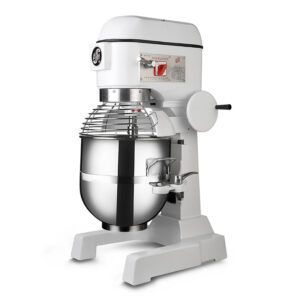
3. Performance and Power
Bowl-Lift Mixers:
- Power: Bowl-lift mixers are often more powerful than tilt-head mixers. They are designed to handle heavy-duty tasks, such as kneading dense doughs and mixing large quantities.
- Durability: The robust design and powerful motor make bowl-lift mixers highly durable and long-lasting, capable of withstanding frequent use in a busy kitchen.
Tilt-Head Mixers:
- Power: While tilt-head mixers may not be as powerful as bowl-lift models, they still offer sufficient power for most home baking and cooking tasks. They are well-suited for lighter to medium-duty mixing.
- Versatility: These mixers are versatile and can handle a variety of tasks, from whipping egg whites to mixing cake batter. However, they may struggle with very dense or heavy mixtures.
4. Price and Value
Bowl-Lift Mixers:
- Cost: Bowl-lift mixers are generally more expensive than tilt-head models. The higher price reflects their increased power, capacity, and durability.
- Value: For serious bakers and those who frequently prepare large batches or heavy doughs, the investment in a bowl-lift mixer can be worthwhile due to its performance and longevity.
Tilt-Head Mixers:
- Cost: Tilt-head mixers are typically more affordable, making them a popular choice for home bakers and those with budget constraints.
- Value: These mixers offer good value for money, providing versatility and convenience for a wide range of mixing tasks.
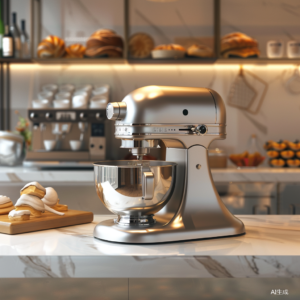
food mixer
5. Maintenance and Cleaning
Bowl-Lift Mixers:
- Cleaning: Cleaning a bowl-lift mixer can be a bit more cumbersome due to the stationary head and the need to remove the bowl from the lifting arms. However, most bowls and attachments are dishwasher safe, simplifying the process.
- Maintenance: Regular maintenance, such as lubricating the lifting mechanism and checking the motor, is essential to ensure the longevity of a bowl-lift mixer.
Tilt-Head Mixers:
- Cleaning: Tilt-head mixers are generally easier to clean. The tilt-head design provides better access to the bowl and attachments, making it simpler to remove residue and ensure thorough cleaning.
- Maintenance: These mixers require less maintenance compared to bowl-lift models, but it’s still important to keep the hinge and locking mechanism in good condition.
6. Space and Storage
Bowl-Lift Mixers:
- Footprint: Bowl-lift mixers tend to have a larger footprint, requiring more counter space. Their height can also be an issue for storage under kitchen cabinets.
- Storage: Due to their size and weight, bowl-lift mixers are best kept on the countertop. Moving them frequently can be cumbersome.
Tilt-Head Mixers:
- Footprint: Tilt-head mixers are more compact and can fit into smaller spaces, making them ideal for kitchens with limited counter space.
- Storage: These mixers are easier to store in cabinets or on shelves due to their smaller size and lighter weight.
7. Attachments and Accessories
Bowl-Lift Mixers:
- Attachments: Bowl-lift mixers often come with a variety of attachments, including dough hooks, flat beaters, and wire whisks. They may also have optional attachments for tasks like pasta making or meat grinding.
- Compatibility: The larger capacity and power of bowl-lift mixers make them compatible with more heavy-duty attachments, expanding their functionality.
Tilt-Head Mixers:
- Attachments: Tilt-head mixers also come with standard attachments and may offer additional accessories for various tasks.
- Compatibility: While they may not support as many heavy-duty attachments as bowl-lift models, tilt-head mixers still offer a wide range of options for different mixing needs.
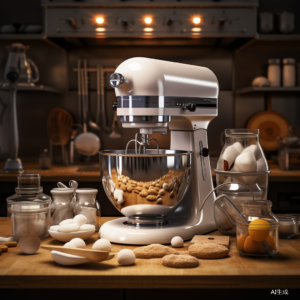
food mixer
8. Choosing the Right Mixer for You
Consider Your Baking Needs:
- Frequent Large Batches: If you regularly bake large quantities or work with heavy doughs, a bowl-lift mixer might be the better choice for its power and capacity.
- Occasional Baking: For those who bake occasionally or in smaller batches, a tilt-head mixer offers convenience, ease of use, and sufficient power for most tasks.
Kitchen Space:
- Limited Counter Space: Tilt-head mixers are more compact and easier to store, making them ideal for smaller kitchens.
- Ample Counter Space: If you have enough counter space to accommodate a larger appliance, a bowl-lift mixer can be a permanent fixture on your countertop.
Budget:
- Higher Budget: Bowl-lift mixers are generally more expensive but offer increased durability and power, making them a good investment for serious bakers.
- Lower Budget: Tilt-head mixers are more affordable and provide excellent value for everyday mixing tasks.
9. Popular Models and Brands
Bowl-Lift Mixers:
- KitchenAid Professional 600 Series: Known for its powerful motor and large capacity, this mixer is a favorite among serious bakers.
- Kenwood Chef XL: This model offers a robust design and a variety of attachments, making it versatile and reliable.
Tilt-Head Mixers:
- KitchenAid Artisan Series: A popular choice for home bakers, this mixer is known for its versatility, ease of use, and stylish design.
- Cuisinart Precision Master: This mixer offers a good balance of power and affordability, with multiple speed settings and attachments.
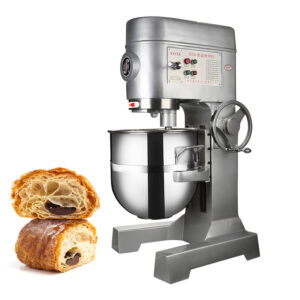
food mixer
Conclusion
Choosing between a bowl-lift and tilt-head mixer ultimately depends on your specific needs, preferences, and kitchen setup. Both types of mixers have their unique advantages and potential drawbacks, making it essential to consider factors such as power, capacity, ease of use, and budget. By understanding the key differences and evaluating your own baking habits, you can select the mixer that will best support your culinary endeavors.
Investing in a high-quality stand mixer can transform your baking experience, providing you with the tools needed to create delicious, homemade treats with ease and efficiency. Whether you opt for the stability and power of a bowl-lift mixer or the convenience and compactness of a tilt-head model, you’ll be well-equipped to tackle any recipe that comes your way.
DONGQING has a stand mixer for every baker,from the B-10 for small-batch baking to the B-60 for high-volume tasks.
All DONGQING mixers are built to last and come with a warranty. To learn more, visit DONGQING today and shop for the perfect stand mixer.Welcome to contact us


